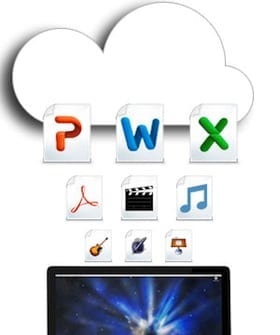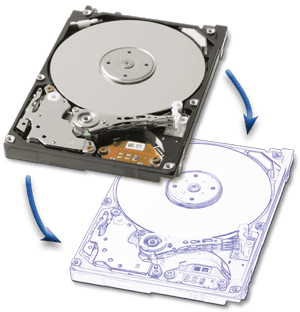 Here at the OWC Blog, we’ve posted a lot of advice about backing up your data over the years. However, there’s one thing we’ve never explicitly talked about: how to restore your system from that backup if disaster strikes.
Here at the OWC Blog, we’ve posted a lot of advice about backing up your data over the years. However, there’s one thing we’ve never explicitly talked about: how to restore your system from that backup if disaster strikes.
Now, I can hear half of you out there saying, “Pfft! You simply replace the drive and reverse the backup process so you’re writing to the drive you just replaced.” To an extent, that’s true, provided you have a bootable backup and you’re 100% sure there’s nothing corrupted with the system.
However, if you don’t have a bootable backup (e.g., you’re backing up via Time machine) you can’t simply “copy it all back.” Furthermore, installing a new boot drive provides an excellent opportunity to clear out some of the “junk” that’s probably accumulated in your drive over the years. For those reasons, we recommend the “Fresh Install and Migrate” method when upgrading/replacing your system drive, which works for both bootable clones and Time Machine backups.
Step 1: Install your replacement drive.
If you need help determining what drive will work for your particular Mac, you can use MyOWC to help you pick out the right drive for your model. If you’re still not 100% sure, go ahead and get in touch with one of our sales or tech representatives – they’ll be happy to help you get what you need.
When it comes to the actual installation, obviously, the steps for this will vary from Mac to Mac. Fortunately, we have video walkthroughs for a wide range of Macs in our Tech Center. If you’d rather follow along on your smartphone or tablet, we also have the videos available via iTunes and on our YouTube channel.
Step 2: Boot to the OS X Installer.
For 10.6 or earlier, boot to your installation disc. Simply put the DVD in the optical drive (or attach the USB key for those that came with it) and restart. Since your new drive is empty, the only disk you can boot to will be your installer.
For those running 10.7 or later, this is a little bit trickier.
- If you have a bootable backup (i.e., a clone) that also made a copy of your recovery partition: attach your backup drive to your Mac and boot to the OS X Recovery System by holding down Command-R at startup. Select the language you want to use and then proceed to the next step.
- If you don’t have a bootable backup, but your computer came with OS X 10.7 or later: You you will need to have an Internet connection, preferably Ethernet (you can use WiFi, but it will take longer). If your computer came with 10.7, but you’re running 10.8 or later, that’s okay; we’ll address that in a later step.
- If you don’t have a bootable backup and you’re running 10.7 or later but your computer came with OS X 10.6 or earlier: you’ll need to install from the latest DVD first, then update later. In most cases, this you will initially be installing 10.6.x. That’s okay, we will update the OS later.
Step 3: Format your new drive
Once you’re booted to your installer disk/recovery volume, you will first need to format your new drive using Disk Utility. In all versions of OS X you can find Disk Utility in the Utilities menu at the top; in 10.7 and later, it’s also in the main list in the center of the screen.
Once Disk Utility is open, select the new drive from the list on the left. This is generally the only one without an indented name underneath it. Once you have the disk selected, click on the “Erase” tab on the right.
Set the Volume Format to “Mac OS Extended (Journaled)”. This is the recommended format for all drives that have OS X installed on them. The name can be anything you want. Once you have set those two items, you can click the “Erase…” button.
Step 4: Install OS X on your new drive
Once you’ve formatted your drive, you can close Disk Utility. If you’re in 10.7 or later, you’ll need to select the “Reinstall Mac OS X” option from the Mac OS X Utilities screen. In earlier OS versions, quitting Disk Utility will take you right back into the installer.
Follow the steps in the installer as they are presented to you, making sure to select your new drive (the one you just formatted in the previous step) as the install location. The installers for Mac OS X are very straightforward to use; all you need to do is follow the on-screen instructions. Once you have filled in the required information, the actual install will begin. This can take quite a while, depending on your system. Fortunately, the process at this point is automated, so you can do something else while waiting for the install to complete.
Step 5: Use Migration Assistant to transfer your data to your new drive.
Once OS X has installed, your computer will restart to the new drive and walk you through the final setup steps. Continue through the on-screen prompts until it gets to the point where it asks if you’d like to import user data from another system. This part of the setup process uses Apple’s built-in Migration Assistant utility.
If you’re going to be updating to a later version of the OS (e.g., you’re installing 10.6, but you’re upgrading to 10.7 or 10.8), you should skip this step at this point, and create a temporary account that you can use to update your software from the App Store. The big thing to remember is to give the account a different name than the one you’re going to restore (I recommend just going with “temp”, as it’s only temporary). Once you’ve upgraded your OS through the App Store (part of Step 6), you can then launch Migration Assistant from Applications/Utilites/Migration Assitant.
At this point, you will want to connect your backup drive if you didn’t use it to boot from earlier. You can then select the option to transfer your user information from another disk or Time Machine backup. Select the appropriate option and click the “Continue” button.
The next screen will list the things you can transfer. Select any users you want to bring over to your new drive, as well as any applications and network settings. You can either select them all, or you can select/deselect items individually by expanding the folders via the disclosure triangles. There is an option for “Files and Folders,” which you will likely want to bring over as well, since some applications install some settings in non-standard places.
Once you have selected the items you would like to bring over, click the “Transfer” button. Depending on how much you’re transferring, this can take a while. After Migration Assistant finishes, you can continue the rest of the setup and boot to your new drive.
Step 6: Make sure your System software is up-to-date.
If you installed the OS you usually run, you can skip this paragraph. If you normally run OS X 10.7 or 10.8, but you had to choose to install an earlier version as outlined in Step 2, then now is the time to rectify this. First, you will need to be running 10.6.8 or later. If you’re running 10.6 thru 10.6.7, select “Software Update” from the Apple menu and run the 10.6.8 updater. Once you’re running 10.6.8, you should be able to access the App Store from the Apple menu. Sign in to the App Store and select the appropriate OS from the Purchases tab. You should be able to upgrade the OS from there; just run the installer and follow the onscreen prompts. You can then go back to Step 5 and run Migration Assistant from the Applications/Utilities folder.
Once you’re running the OS you normally run, go to the Apple menu, select “Software Update…”, and run all the updaters that are available. Restart if necessary and repeat the process until there are no more updates to install.
Step 7: Repair disk permissions.
Use Disk Utility (Applications>Utilities>Disk Utility) to repair permissions on your new drive. Select the new OS X volume in the list on the left, then click on the “First Aid” tab, then click on “Repair Disk Permissions”.
Step 8: Double-check your files.
Run all your apps and go through your files to make sure everything is working and nothing is missing. You may have to re-authorize some apps or, in very rare cases, reinstall the application altogether. Make sure everything is as you want it before re-using your backup drive.
Step 9: You’re Done!
Once you’ve checked to make sure your data came through correctly, you’re ready to go!
In conclusion:
Having to recover from a drive failure is never a pleasant undertaking, but it is an unfortunate fact that it is something you are more than likely going to experience at least once during your time as a computer user. By implementing a reliable backup plan and following these instructions, though, you should at least be able to recover your important data when it happens.








The SuperDuper approach seems like the obvious choice (but only if you want to replicate your pre-crash system.) In fact, when I replaced my Mac-mini internal drive with an SSD, the procedure mimics exactly the failure of the internal drive and its replacement by a new drive:
* Install new internal drive.
* Boot from the most recent of the SuperDuper external clones.
(I keep 6 clone images on 3 external drives using the OWC Do-It-Yourself external enclosures.)
* Initialize the new internal drive as described in the article, except that you are running on the external clone.
* Still running on the external drive, un SuperDuper to clone the it onto the new internal drive.
* Reboot from the new internal drive.
* Live long and prosper.
SuperDuper is a great product, and I am glad to have it. I have completely disabled TimeMachine on both Macs (all other machines are Linux.) TimeMachine squanders disk space like a six-year-old kid spending his allowance, and seems to be useful only if you want to retrieve earlier versions of draft documents.
Its not possible to migrate a 10.8 TimeMachineBackup to 10.6.
You have to create an adminaccount, upgrade to 10.8 and use migrationassisten
On the other hand, I have found Time Machine and SuperDuper! the best options. The latter even prevents failed backups that are not possible with other strategies like the manual Finder drag and drop, Carbon Copy Cloner (CCC) and even Retrospect which may produce errors when trying to copy some files.
Great, but it is better to update the system software on the Mac BEFORE formatting and before migrating for obvious reasons (Disk Utility and Migration Assistant may have been updated!!!).